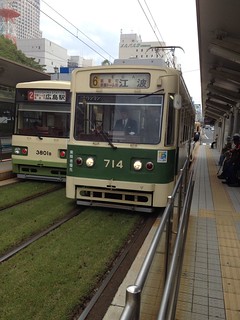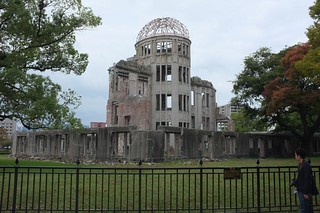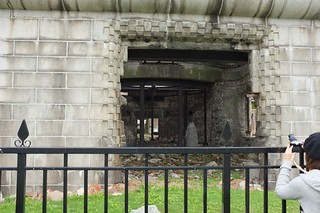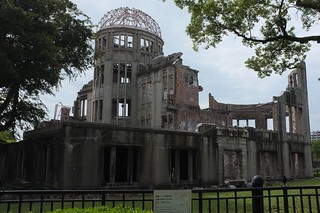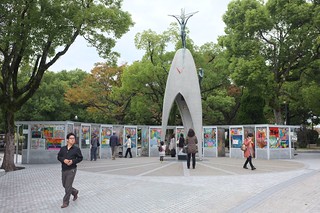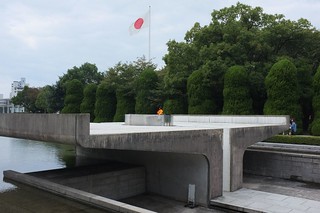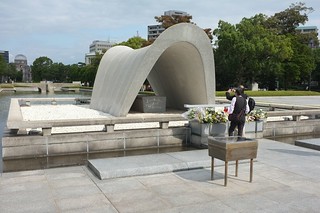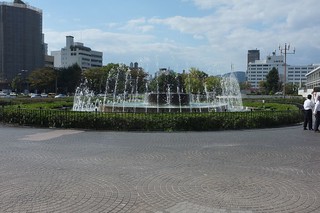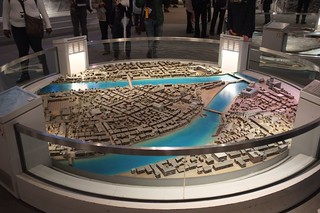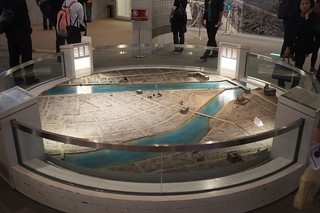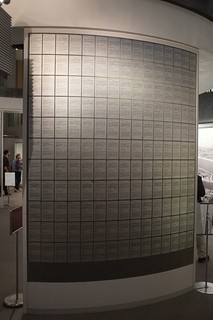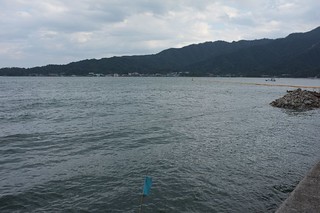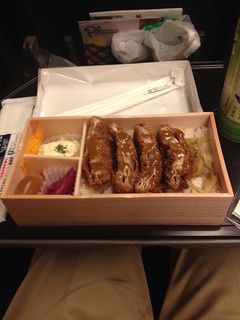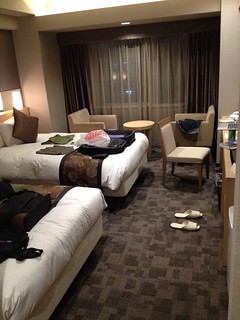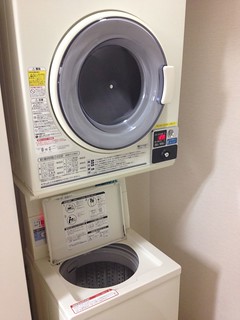Day 8: Hiroshima
It’s standard practice for the toilet to have instructions here, but in my hotel room in Hiroshima there were also instructions for the shower:
Apparently there was a strong earthquake overnight 200 miles off the coast of eastern Japan, but it doesn’t sound like it had any particular impact on land. There was initially a tsunami advisory, but it was soon lifted.
After the breakfast buffet (I’ve largely been sticking with western-style breakfast items; I’m not a big fan of fish under most circumstances and certainly not to start my day) it was time to venture out into Hiroshima.
So far the places I’ve visited have had the tourist attractions within walking distance (say, a 30-minute walk at most) of the train station. Hiroshima Station is a good distance from the Peace Memorial Park, but the city has a comprehensive electric streetcar network to get around (and, in fact, some of the streetcars were back up and running three days after the bomb). So I hopped on a streetcar from the rail station to the park and was there about 15 minutes later.
A-Bomb Dome
The A-Bomb Dome is the remains of a building (which had a domed top) from the bombing. It is the only monument left standing after the rest of the city was rebuilt. Due to its location almost directly under the detonation point of the bomb, most of the force of the blast was directed downward instead of sideways, which is one of the reasons that much of the building is still standing (as opposed to most of the buildings in the surrounding area that were reduced to rubble).
Children’s Peace Memorial
The Children’s Peace Memorial was erected in memory of a girl, Hanako Sasaki, who died after contracting leukemia a decade after the bomb. An ancient legend in Japan says that if you make a wish and fold 1,000 paper cranes, your wish will come true. Her wish was to be cured, but she died before she was able to complete all 1,000 cranes. Her schoolmates started a campaign to build a memorial in her honor. People from around the world donate paper cranes to the memorial, which are on display in those booths surrounding the central structure.
Flame of Peace and Cenotaph
The park, museum, and monuments are built out around the Flame of Peace, which has burned continuously since August 1, 1964, and the Cenotaph, under which is a chest containing a record with the names of all known atomic-bomb victims. The list currently contains more than 275,000 names.
Peace Memorial Museum
The Peace Memorial Museum goes through the history of Hiroshima before the bomb, then the effects of the bomb and the recovery of the city after.
The history of the area is interesting (as with all big cities in Japan, it has a rich history going back much longer than we have been a country). But the main impact of the museum is, of course, the devastating effects of the bomb.
There are models of the part of the city around the hypocenter immediately before and immediately after the detonation.
After every atomic test detonation in the world, the successive mayors of Hiroshima have written letters to the ambassador or head of state of the country that performed the test expressing disappointment and regret at their actions and urging the importance of peace and nuclear disarmament. The museum has small copies of all of the letters, up to several recent letters to President Obama regarding the United States’ subcritical reaction testing, lining several walls.
The second floor of the museum was primarily filled with artifacts from destroyed buildings as well as personal effects of people—mainly children—that died in the blast.
Another section of the museum documented the effects of the blast on people both short term (pictures of victims with burns over their entire bodies) and long term from the radiation exposure.
The last section of the museum talks about the rebuilding and recovery efforts starting immediately after the bomb up through present time with ongoing care for survivors. Toward the end there’s a strong emphasis on the city of Hiroshima’s continuing efforts to promote complete nuclear disarmament throughout the world.
The museum is not, of course, a feel-good type of place, but I think it’s exceptionally well done.
Wrap up of park
After the museum I walked around the park some more, and when I was looking at one of the maps an older Japanese woman came up to me and asked where I was from. I told her America, and she said, “Ah, over there are some monuments of Americans who helped in the restoration efforts after the war. If you have time I’ll show you.” I said yes and she walked me over to them, pointing out some things along the way. I thanked her and she went on her way. Very nice! I think she was a volunteer tour guide or something because there was something that she didn’t remember how to say in English and she pulled out a big binder of English descriptions of all of the parts of the park and showed the page to me to read.
Next stop in the park was at the Hiroshima National Peace Memorial Hall for the Atomic Bomb Victims.
The centerpiece of the fountain represents a clock showing 8:15, the time the bomb detonated. The museum above had several watches on display that victims were wearing that were stopped at 8:15.
Then it was back on the streetcar to Hiroshima Station.
Miyajima
I planned my day poorly (didn’t realize the time it would take to get out to Miyajima, ride a ferry to the island, ride back, and take the train back) and didn’t end up leaving enough time for a full exploration of Miyajima before I needed to be back for the Shinkansen to Kyoto that I had a seat on (and this particular Shinkansen line gets very busy—I actually had to get a reservation on a later train to Hiroshima yesterday because the original train I tried to book was full. When I made the reservation to Kyoto the day before they were already out of window seats). But I still had enough time to catch the Sanyo Local Line to Miyajima-guchi, look out at the island for a couple minutes instead of taking the ferry over to it, then hop back on the train to Hiroshima Station, grab my bags, and catch my Shinkansen.
So that’s what I did. You can just see the shrine gate coming up out of the water if you look at the full size pictures.
To Kyoto
Then it was on the Shinkansen Sakura 560 for the hour-and-a-half journey from Hiroshima to Shin-Osaka (with an early dinner on the train) and a quick 15-minute ride on the Shinkansen Kodama 678 from Shin-Osaka to Kyoto.
This is a new hotel, and I got bumped up to a two-bed room. Tons of space!
It’s also laundry night.

